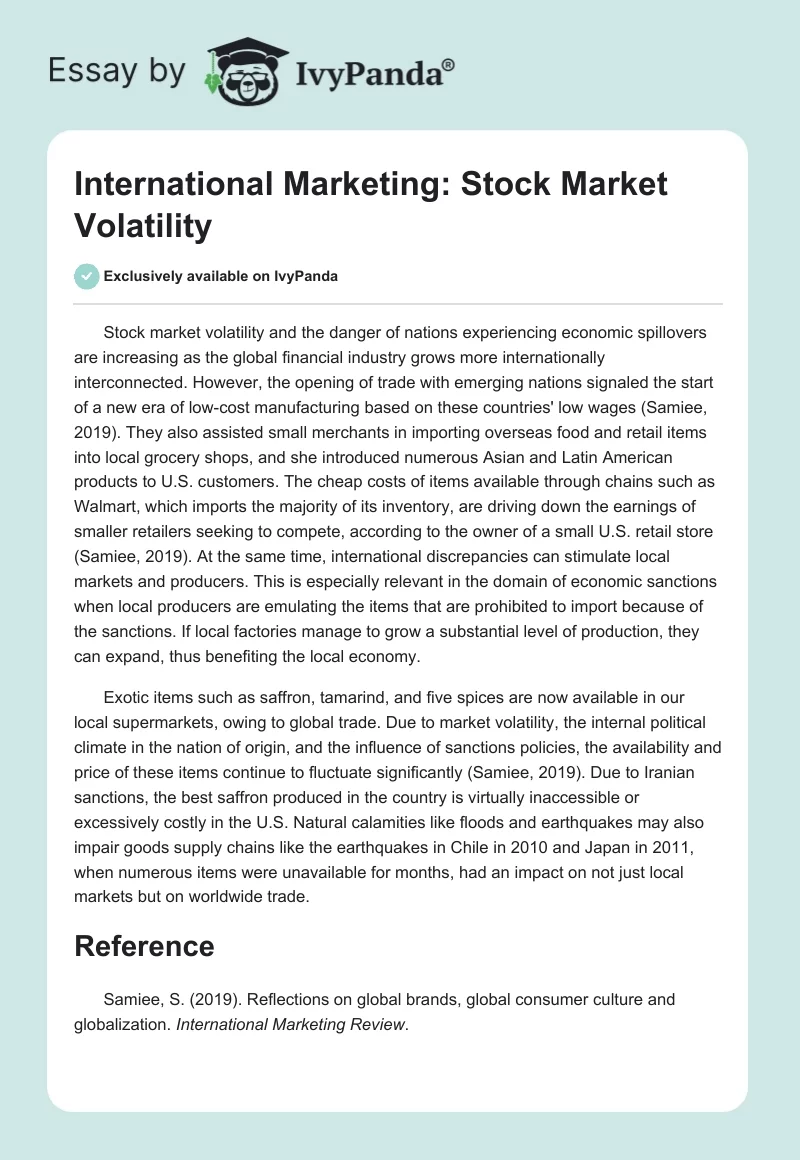Stock market volatility and the danger of nations experiencing economic spillovers are increasing as the global financial industry grows more internationally interconnected. However, the opening of trade with emerging nations signaled the start of a new era of low-cost manufacturing based on these countries’ low wages (Samiee, 2019). They also assisted small merchants in importing overseas food and retail items into local grocery shops, and she introduced numerous Asian and Latin American products to U.S. customers. The cheap costs of items available through chains such as Walmart, which imports the majority of its inventory, are driving down the earnings of smaller retailers seeking to compete, according to the owner of a small U.S. retail store (Samiee, 2019). At the same time, international discrepancies can stimulate local markets and producers. This is especially relevant in the domain of economic sanctions when local producers are emulating the items that are prohibited to import because of the sanctions. If local factories manage to grow a substantial level of production, they can expand, thus benefiting the local economy.
Exotic items such as saffron, tamarind, and five spices are now available in our local supermarkets, owing to global trade. Due to market volatility, the internal political climate in the nation of origin, and the influence of sanctions policies, the availability and price of these items continue to fluctuate significantly (Samiee, 2019). Due to Iranian sanctions, the best saffron produced in the country is virtually inaccessible or excessively costly in the U.S. Natural calamities like floods and earthquakes may also impair goods supply chains like the earthquakes in Chile in 2010 and Japan in 2011, when numerous items were unavailable for months, had an impact on not just local markets but on worldwide trade.
Reference
Samiee, S. (2019). Reflections on global brands, global consumer culture and globalization. International Marketing Review.

